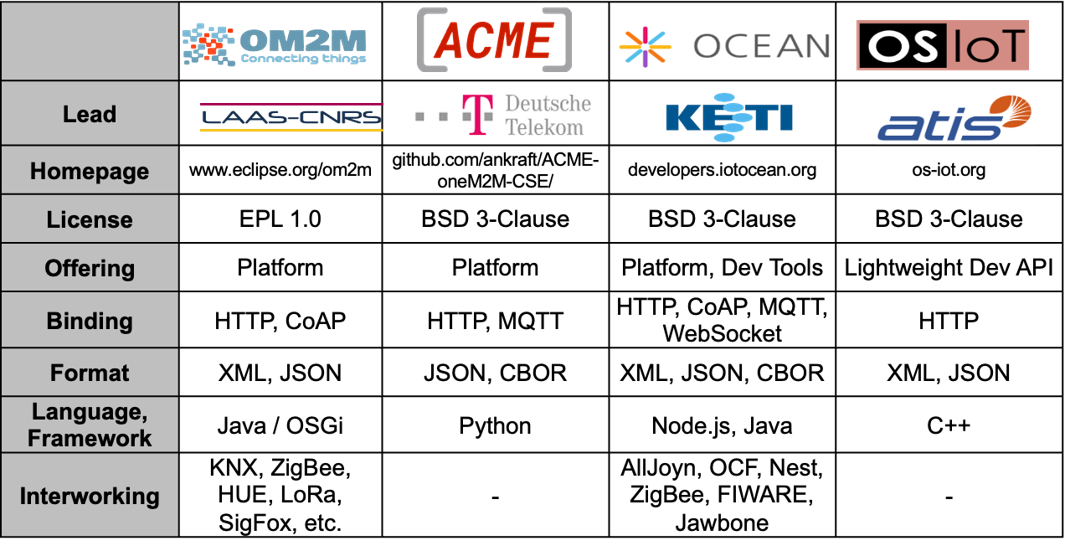
July 2023 - In this interview, Roland Hechwartner summarizes the latest developments from oneM2M’s recent Technical Plenary #60. In addition to representing Deutsche Telekom (DT), Roland is the Chairman for oneM2M’s Technical Plenary (TP) and responsible for the coordination of the overall management of the technical work within the TP and its Working Groups (WGs).
Q: Would you begin with an overview of the key developments at TP60?
RH: TPs are week-long affairs and this one took place between 26 and 30 June 2023. ETSI hosted us at their premises in the south of France and attendees participated in a range of Technical Plenary and working group meetings.
The session was bitter-sweet. While we celebrated several standardization and market-outreach developments, there was an element of sadness as we remembered Andrew Min-gyu Han who sadly passed away earlier this year. Andrew represented Hansung University in Korea and had been a very involved delegate in oneM2M. He was Chair of the TDE WG and Convenor of both the Work Program Management committee as well as the newly created ACademia Relations (ACR) group. His passing is a huge loss to the oneM2M community.
Q: That is sad news indeed. What were the other standardization developments at the TP?
RH: I will speak about outputs from the three WGs in a moment. Before that, one important story to celebrate is about a joint White Paper (WP) that oneM2M released with ETSI’s multi-access edge computing (MEC) Industry Specification Group (ISG).
The WP stems from a collaborative effort across 3GPP and oneM2M communities. In effect, it brings together mobile communications, via the multi access edge component, and IoT disciplines. The WP contains an assessment of how to enable Multi-access Edge Computing in IoT by deploying ETSI MEC and oneM2M components. Smart factories, automotive scenarios and edge deployments involving constrained devices are example use cases discussed in this WP.
The authors’ analysis confirmed synergies between ETSI MEC and oneM2M IoT platforms. They also went on to describe several joint deployment options. There is likely to be a further round of collaborations including joint open-source implementations to showcase the option D proposal where oneM2M and MEC are tightly coupled in the same edge node.
An additional step will involve studying the deployment of a oneM2M edge platform onto an ETSI MEC platform as an MEC application. Such tight integration will drive benefits from specific mechanisms for application onboarding and instantiation, for example, and from additional MEC service APIs. In terms of key technologies for 5G and beyond, tighter integration will also help to attain higher KPI levels for low-latency and network efficiency metrics.
Members involved in this work obviously want to take the work further into deployment and they put forward several ideas. One avenue is to pursue collaborations between open-source communities. On the oneM2M front, these include OCEAN, OM2M, ACME and tinyIoT communities, among other possibilities. Their counterparts from the ETSI MEC perspective include LF Edge and CAMARA. Other initiatives include co-hosted international hackathons that use MEC and oneM2M as well as interoperability testing events.
The release of the WP was timed to take place immediately prior to ETSI’s annual IoT Week conference which happened in the week after TP60. For interested readers, here is a link to the ETSI IoT Week presentation on the work.
Q: Let us now turn to the Working Group activities. What happened in those areas?
RH: Beginning with the Requirements & Domain Models (RDM) working Group, Massimo Vanetti (SBS) chaired those meetings in his role as the newly elected RDM chair.
The WG approved a technical report, TR-0068 from Sejong University on AI-enablement in IoT systems. This technical report, which will shortly be published, analyses existing AI/ML technologies that can impact IoT service layer platforms, especially the oneM2M IoT System. It also analyses a collection of eight representative AI/ML service use cases that employ data collected in the oneM2M system. As a result of this analysis, the TR lists potential requirements and key features to enable AI/ML in the oneM2M system. The oneM2M system currently does not support those AI/ML related requirements. Therefore, the high-level concepts discussed in this technical report need further investigation. These investigations will facilitate further normative work, resulting in a oneM2M technical specification in Stage 2.
In other work, members agreed on contributions to the technical specification, TS-0023, on device models for Public Warning Messages and some devices for building automation. There was also continued progress on the Smart Lifts work item, WI-0098, and a new work item on Meta-IoT, which is contained in WI-0110.
Our members are exploring new ways to maintain specification documents, one of which involves GitLab processes. Initial experiments will focus on TS-0023 which is itself evolving as members continue to advance Release 5 work on the topic of SDT (smart device template) based Information Model and Mapping for Vertical Industries.
Q: Let’s turn to the System Design & Security and Testing & Developers Ecosystem WGs.
RH: Yes, for their part, SDS WG members made progress on Release 5 versions of specifications. To support the rapporteurs, one suggestion was to trial the Git-based process for all Release 5 specifications and enhance it sooner than later to older versions, from Release 4 down to Release 2.
There was approval for some change request (CR) packs to TS-0001 Functional Architecture with a new feature for R5 and one correction for R3. Corrections regarding R4, R3 and R2 were agreed for TS-0004 Service Layer Core Protocol Specification, TS-0003 Security Solutions, TS-0008 CoAP Protocol Binding and TS-0009 Http Protocol Binding.
There was a reassignment of Rapporteurs to vacant specifications and the WG still has a vacancy for role of Rapporteur for TS-0001.
In the Testing & Developers Ecosystem (TDE) WG, SeungMyeong Jeong (KETI, Korea) gave an impressive update on oneM2M promotion activities to support developers. The scope of activities covered oneM2M Open-Source Implementations, International Hackathon activities and Developer Tutorials including a video library in the Korean language that is maintained by KETI.
oneM2M Open-Source Implementations
SeungMyeong also spoke about plans for two AIoT Exhibitions, one in Korea and the second in Taiwan, as well as a oneM2M Workshop that will be coming up in Taipei. Partners for the Taipei workshop include Taiwan’s Institute for Information Industry, the Taiwan Association of Information and Communication Standards and the Cloud Computing and IoT Association in Taiwan.
Q: To close, what are the plans for the next TP?
RH: The next TP meeting, TP61, will be held as a hybrid event in North America and hosted at Penn State University in Pennsylvania. This is scheduled for 14-18 August. To close 2023, there will be another hybrid TP – TP62 – which is planned in Tokyo between 4 to 8 December.
Further out, ETSI’s Xavier Piednoir informed the group that he is waiting for results of a funded project which could potentially be used to host a TP meeting in Malaysia. There have been some promotional activities in Malaysia, and it was felt that this was an important market to capture.
Finally, I can also confirm that there will be a meeting in China in 2024.
